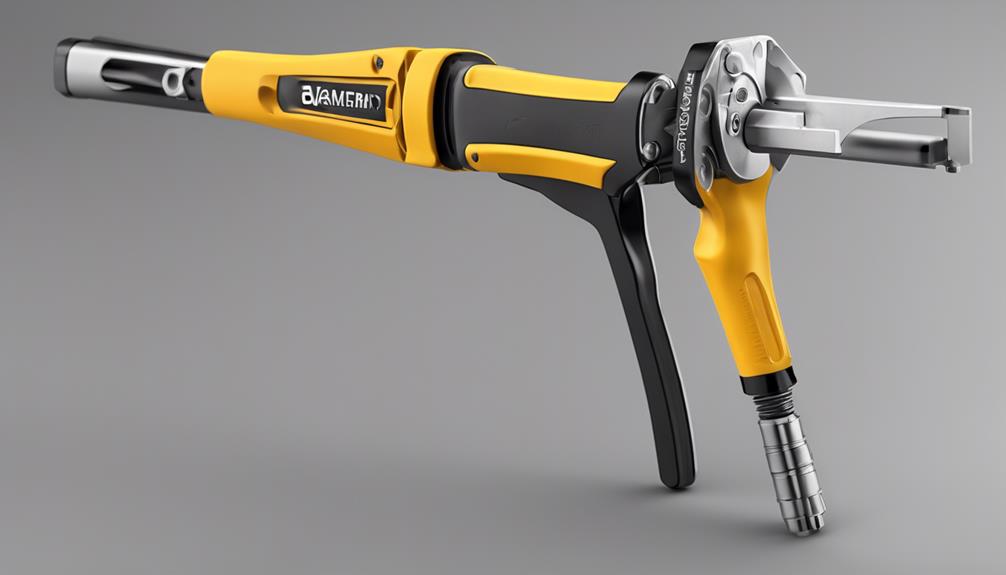When tackling HVAC projects, a swaging tool is essential for precise pipe fittings, cost efficiency, and optimizing resources. Select the correct die size, prep the pipe end, and swage with consistent pressure for best results. Seek tools with durability, versatility, precision, efficiency, and consistent outcomes. Maintain the tool by lubricating, inspecting, and addressing wear promptly. Always follow safety guidelines, get proper training, wear protective gear, and check for defects before use. This crucial tool guarantees efficiency and quality in your HVAC work.
Key Takeaways
- Enhances precision and efficiency in pipe fitting tasks.
- Minimizes material wastage, reducing costs.
- Offers versatility to work with various tube sizes.
- Ensures durability with hardened steel or aluminum materials.
- Requires proper maintenance for longevity and safe operation.
Benefits of Using Swaging Tool HVAC

When working in HVAC systems, utilizing a swaging tool regularly can greatly enhance your efficiency and precision in pipe fitting tasks. The benefits of using a swaging tool in HVAC applications are vast, with two key advantages being cost efficiency and improved performance.
Cost efficiency is an important aspect of any HVAC project, and using a swaging tool can contribute greatly to this. By precisely shaping and connecting pipes with a swaging tool, you can minimize material wastage and reduce the need for additional fittings or connectors. This guarantees that you're optimizing your resources and saving money in the long run. Additionally, the time saved by using a swaging tool translates to lower labor costs, further enhancing the overall cost effectiveness of your HVAC projects.
In terms of performance, a swaging tool can elevate the quality of your pipe fittings to a whole new level. The seamless connections created by a swaging tool result in improved airflow and system efficiency. This not only enhances the overall performance of the HVAC system but also reduces the likelihood of leaks or malfunctions.
The precision offered by a swaging tool ensures that your pipe fittings are secure and airtight, leading to a more reliable and effective HVAC system.
How to Use Swaging Tool
To effectively utilize a swaging tool in HVAC applications, precise techniques for shaping and connecting pipes are essential. Proper technique is vital when using a swaging tool to guarantee a secure and leak-free connection. Begin by selecting the appropriate die size for the pipe diameter you're working with. Make sure the pipe end is cut cleanly and deburred to avoid any imperfections that could impact the swaging process.
Insert the pipe into the swaging tool and tighten the tool securely around the pipe. Apply consistent pressure while rotating the tool around the pipe to gradually shape it to the desired swage. Avoid excessive force, as this can distort the pipe and lead to improper sealing. Once the swaging process is completed, check the connection for any irregularities or deformities that may cause leaks.
Common mistakes when using a swaging tool include applying uneven pressure, using the incorrect die size, or rushing the process. Take your time and ensure each step is executed correctly to achieve a professional and reliable connection.
Top Features to Look For

Consider key features such as durability, versatility, and precision when evaluating a swaging tool for HVAC applications. The tool's durability is essential for long-term use in demanding HVAC projects. Look for materials like hardened steel or aluminum alloys that can withstand the pressure and repetitive use without wearing out quickly. Additionally, make sure that the swaging tool offers efficiency in operation, meaning it should be able to complete the swaging process quickly and accurately to save you time and effort on the job.
When choosing a swaging tool for HVAC tasks, focus on its efficiency in operation. The tool should provide consistent results with each use, offering precise swaging without any errors. An efficient swaging tool can help you complete projects faster and with higher quality outcomes.
| Key Features | Description | Importance | |
|---|---|---|---|
| Durability | Hardened materials like steel or aluminum | Longevity and reliability | |
| Versatility | Ability to work with various tube sizes | Adaptability to different projects | |
| Precision | Accurate swaging results without errors | Quality and professional finish | |
| Efficiency | Quick and consistent operation | Time-saving and reliable performance |
Maintenance Tips for Longevity
For peak performance and extended lifespan of your swaging tool in HVAC applications, implementing proper maintenance practices is essential. Two critical aspects of maintaining your swaging tool are proper lubrication and regular inspections.
Proper lubrication is important to guarantee the smooth operation of your swaging tool. Before each use, apply a small amount of lubricant to the moving parts of the tool, such as the jaws and handles. This will reduce friction, prevent wear and tear, and prolong the life of the tool. Additionally, make sure to use the appropriate type of lubricant recommended by the manufacturer to avoid damaging the tool.
Regular inspections are crucial for detecting any signs of wear or damage early on. Check for any loose screws, worn-out parts, or signs of corrosion. Inspect the jaws for any deformation or irregularities that may affect the tool's performance. If any issues are identified during the inspection, take immediate action to address them, whether it's tightening screws, replacing parts, or seeking professional maintenance.
Safety Precautions to Follow

Before operating a swaging tool in HVAC applications, make sure you adhere to essential safety precautions to mitigate potential risks and injuries. Proper training is vital before using a swaging tool.
Familiarize yourself with the tool's operation manual to understand its functions and safety features. Only trained and authorized personnel should handle swaging tools to prevent accidents.
Personal protective equipment (PPE) is a must when using a swaging tool. Wear safety goggles to protect your eyes from any debris that may be produced during the swaging process. Additionally, wearing heavy-duty gloves is essential to safeguard your hands from sharp edges and potential injuries while handling the tool.
Always ensure that your clothing is appropriate for the task and avoid loose items that could get caught in the tool.
Before starting any swaging operation, inspect the tool for any damage or defects. A faulty swaging tool can pose serious risks to the operator.
Always work in a well-lit and properly ventilated area to ensure a safe working environment. Keep the work area clean and organized to prevent tripping hazards or accidents.
Conclusion
To sum up, utilizing a swaging tool in HVAC work offers numerous benefits, such as increased efficiency and precision in creating tight connections. By following proper usage techniques, selecting a tool with essential features, and maintaining it regularly, you can guarantee its longevity and peak performance.
Remember to always prioritize safety by wearing appropriate protective gear and following safety precautions to prevent accidents and injuries. Mastering the use of a swaging tool will unquestionably enhance your HVAC projects.
